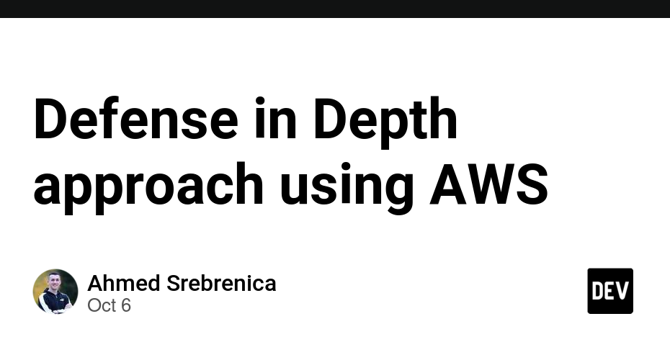Dev
1M
220

Image Credit: Dev
Defense in Depth approach using AWS
- Defense in depth is a layered approach to vulnerability management that reduces risk.
- The Defense in Depth approach is implemented by utilizing AWS services such as EC2, Application Load Balancer, Web Application Firewall, Route 53, and Amazon Certificate Manager.
- The first step is to create a custom VPC with two public and private subnets, where each subnet has its own Network Access Control List.
- To achieve high availability, two EC2 instances with a basic application are launched in public subnets, with Security Groups allowing ports 80 and 443.
- An Application Load Balancer is created in front of EC2 instances, which acts as a server and distributes traffic, ensuring high availability and providing SSL/TLS security, DDoS protection, and Web Application Firewall.
- Custom domain names are created in Route 53, with SSL/TLS certificates being added using the AWS Certificate Manager service.
- The HTTP:80 Listener is redirected to the HTTPS:443 Listener, with proper forwarding to the target group and ACM certificate.
- The Network ACL is updated to only allow HTTPS traffic.
- Optionally, CloudFront can be set up alongside the Application Load Balancer to enhance security.
- The Defense in Depth approach with AWS services ensures multiple layers of security to protect cloud infrastructure.
Read Full Article
13 Likes
For uninterrupted reading, download the app